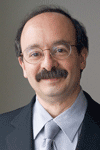
Efficient Design
Questions for Efficient Design
On December 22, 2007 Mr. Lovins contributed the following questions to QuestionsForLiving®.
QFL:
Do you have a universal, or common, set of questions which you ask yourself when designing any new creation (be it a physical structure, engineering solution, or improved processes)?
Mr. Lovins's answer:
- What are we trying to achieve, and what's the cheapest way?
- How can our design imitate nature's solutions?
- How many systems, subsystems, and parts can be eliminated?
- How can each remaining one do as many duties as possible (at least three)?
- How can we gain efficiency leverage by starting our savings downstream, turning compounding losses (from energy source to end-use) around backwards into compounding savings? [See my lectures on advanced energy efficiency at www.rmi.org/stanford]
QFL:
What were the primary questions which you asked yourself in the design of your house in Colorado, where you're ripening your 35th banana crop at 2200m (7100') elevation with no furnace?
Mr. Lovins's answer:
- Would it be feasible to eliminate the usual furnace in a climate that can drop to -44C (-47F), have frost any day of the year, and have 39 continuous days of midwinter cloud?
- Might this approach reduce total net capital cost (because superinsulation, superwindows, air-to-air heat exchangers, etc. cost less than the furnace, ducts, fans, pipes, pumps, wires, controls, and fuel-supply arrangements)?
- Could the building be made as efficient electrically as thermally, saving ~90% of normal usage?
- Could it be ~99% thermally passive, maintaining comfort without controls?
- Could it use solar heat for ~99% of its water-heating energy by using a stratified quasi-seasonal storage tank?
- How could integrative whole-building design improve human health, happiness, and productivity? [Answer was yes to all, with a 10-month payback in 1983. For additional information regarding the house, please take the virtual tour: www.rmi.org/rmi/Amory's+Private+Residence and download the Visitors' Guide at: www.rmi.org/rmi/Library/NC07-12
QFL:
If you do have a universal set of questions, which you ask yourself in the design of any new creation, please list the three to five questions which you find to be most useful.
Mr. Lovins's answer:
I especially enjoy these design quotations:
- You can only get to simplicity through complexity. - Anon.
- Everything should be made as simple as possible but not simpler. - Einstein
- I wouldn't give a nickel for the simplicity on this side of complexity, but I'd give my life for the simplicity on the other side of complexity. - Einstein
- Perfect simplicity is not when there's nothing left to add, but when there's nothing left to take away. - St.Exupéry
- How did I sculpt David? I just chiseled away everything that wasn't David. - Michaelangelo
- Seek the pattern that connects. - Bateson
- You know you're on the right track when your solution for one problem accidentally solves several others. - Corbet
- Avoiding problems is even better than solving them. - Lovins
- All the really important design errors are made on the first day. - Design proverb
Mr. Lovins can be contacted at:
For additional information regarding RMI:
Amory Lovins
Bio
Physicist Amory Lovins is Chairman and Chief Scientist of Rocky Mountain Institute (www.rmi.org) and Chairman Emeritus of Fiberforge Corporation (www.fiberforge.com). His wide-ranging innovations in energy, security, environment, and development have been recognized by the Blue Planet, Volvo, Onassis, Nissan, Shingo, and Mitchell Prizes, MacArthur and Ashoka Fellowships, the Benjamin Franklin and Happold Medals, 11 honorary doctorates, honorary membership of the American Institute of Architects, Fellowship of the Royal Society of Arts, Foreign Membership of the Royal Swedish Academy of Engineering Sciences, and the Heinz, Lindbergh, Right Livelihood, National Design, and World Technology Awards. He advises governments and major firms worldwide on advanced energy and resource efficiency, has briefed 20 heads of state, and has led the technical redesign of more than $30 billion worth of industrial facilities in 29 sectors to achieve very large energy savings at typically lower capital cost. A Harvard and Oxford dropout, he has published 29 books and hundreds of papers and has taught at eight universities, most recently as a 2007 visiting professor in Stanford University’s School of Engineering. In 2009, Time named him one of the 100 most influential people in the world, and Foreign Policy, one of the 100 top global thinkers.
Homepage
http://www.rmi.org/



